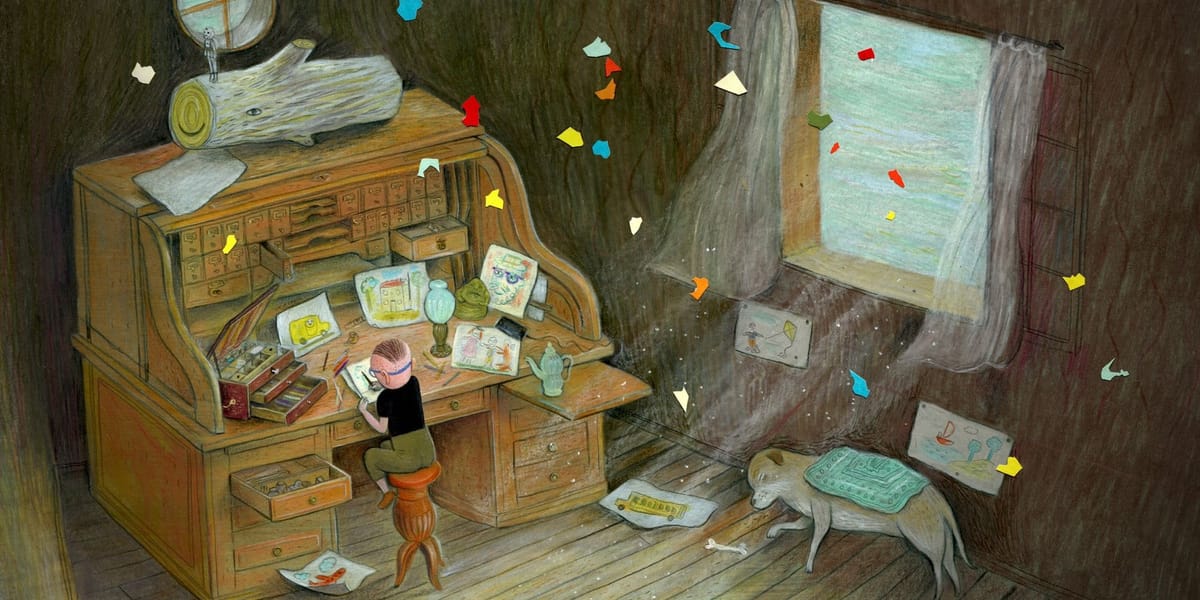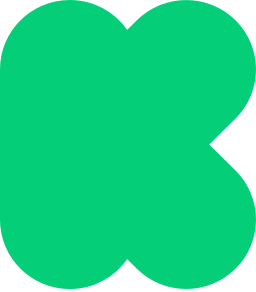How to Create a Great Kickstarter Publishing Project Page
Tips and tricks for each element of your campaign, from choosing your funding goal to lining up creative rewards.

Tips and tricks for each element of your campaign, from choosing your funding goal to lining up creative rewards
A Kickstarter project page is fairly simple but allows for a tremendous amount of variation and creativity. There are seven main elements we’ll go over in this piece: the title and subtitle, project image, project video, funding goal, campaign length, story, and rewards. As you work through each of these, you’ll bring every aspect of your campaign into focus—for yourself and, eventually, your backers.
This guide focuses on all things publishing, which in Kickstarter parlance includes books, comics, journalism, and anything else in the world of words. Whether you’re working on your first campaign or your fortieth, these tips and tricks should help make every aspect of your literary crowdfunding endeavor shine.

Title & Subtitle
Taken together, your title, subtitle, and project image should communicate the entirety of your project in as concise and compelling a way as possible. This is the invitation into your creative journey, the way to ensure that anyone who lands on your page will understand what you’re doing right away and be excited to learn more.
Kickstarter allows up to 60 characters for your project title and 135 for your subtitle, which is plenty of space if used wisely. Here are a few examples of how to do this well:
Rehumanize Me: A Black Youth Anthology
An anthology of poems, essays, and other creative works by 14 young Black authors from Minneapolis, brought to you by 826 MSP.
Sludge: People-Powered Journalism to Follow the Oil Money
A 100% reader-funded investigative journalism project exposing fossil fuel lobbying and efforts to kill the Green New Deal.
ATOMIKA: GOD IS RED OMNIBUS by Sal Abbinanti and Andrew Dabb
The complete series plus rare pinups by Bradstreet, Colan, Cooke, Fabry, Romita Sr., Ross, Sienkiewicz, Turner and more!
Each of these tells an entire story with a small handful of words. It’s clear exactly what the creator will be making, and your interest is piqued by specific, contextualizing names and phrases. Plus, each of these will work well on social media for an audience with hardly any time or attention to spare. The projects that do best on Kickstarter are those that encourage an array of people (backers, readers, fans, and community members) to share them, so if your project can be understood from a single tweet, you’ll be helping your audience spread the word for you.
Project Image
Your project image is like the “book cover” for your campaign, and it will be seen everywhere your project is shared and featured. Kickstarter’s design team has an excellent overview of what makes a good project image, but there are a few more things to emphasize for literary campaigns.

- The best starting point is to choose a single full-bleed image that tells a holistic story about your project, such as your book cover, a panel from your comic, or a representative interior image or photo. Since this image will always appear next to your project’s title and subtitle, you shouldn’t need to add any text on top, but you might decide to include your book’s title in a graphic font to demonstrate your design aplomb.
- Don’t try to make your project image do too much. Authors are sometimes inclined to jam the book cover, a representative image, the title, an endorsement, a bio pic, and more all into that one small square. A project image this busy will not showcase any of that information well, and will wind up being a confusing hodgepodge.
- Keep in mind that these images will appear in many places and at many sizes, so anything too busy or overlaid with lots of small text will be impossible to read or parse when rendered thumbnail-sized, like in a tweet or on a search page.
- Over the course of the campaign, you may want to share your progress in a visual way. To help you do so without cluttering your project image, Kickstarter has created “just launched,” “nearly funded,” and other badges that anyone can use. You can also design your own, but be careful not to overload your image with “sales”-y overlays, which will distract from the creative nature of your work.
Project Video
There’s no requirement to have a video for your project, but they’re a great way to draw potential backers into your world and your work.
Think of your project video as a teaser or trailer for your campaign: a short, dynamic intro that draws people in and whets their appetite. This is just the start of a conversation: You don’t need to tell your entire story in the video, and you shouldn’t try. Kickstarter data shows that about 50 percent of backers stop watching project videos after the first minute, and the rest drop off by the end of the second. So keep it short and don’t feel obliged to create a Hollywood-style, high-production-value film; these videos can easily be made with a phone or laptop camera and some basic editing tools. Most importantly, make sure your tone is one of excitement and fun, your lighting is good, and your words are clear (here’s how to add subtitles and captions to ensure accessibility). Check out this primer from our community education team for more.
Finally, think about other assets you can generate alongside the project video. You might want to film yourself with the same good lighting saying things like “We’re halfway to our goal!” or “Omg fully funded!!” so you can share these in backer updates and on socials while the campaign is running. You could also put together some clips and gifs that showcase your work in a more general sense, which you can add to your website or portfolio and use long after the campaign is over.
Funding Goal
On an all-or-nothing crowdfunding platform, choosing your campaign goal wisely is critical. You don’t want to pick a number that’s so aspirational you aren’t likely to meet it, but you also want to make sure you raise enough to cover your costs. The best way to think about this is to find the balance between what you need and what you can get.
Our Creator Handbook elaborates on working out your project budget, and we can’t overstate how important it is to understand and plan for all the costs that will go into making and fulfilling your project. That means printing and production for all versions of your book or books, as well as any rewards you’ll be making for the campaign. And definitely don’t forget to include shipping! You’ll want to get quotes from printers, check weights at the post office, and do everything else you can to get a full picture of your expenses. For a budgeting deep dive, read through The Cost to Create a Book on Kickstarter by author, micro-publisher, and Kickstarter’s former Director of Publishing, Margot Atwell.

Once you’ve determined how much money you’ll need, it’s time to take stock of what it will be possible for you to raise based on your audience and your reach. Think about your supporters and followers from all your channels, including direct emails, newsletters, social platforms, signal-boosters, and amplifiers. All across Kickstarter, the average backing amount is $25, so to get a very rough estimate, divide that (or the cost of your main reward tier) into the funding goal you’ve determined. Does this number of backers seem reasonable? If so, go forth with confidence! If not, you might consider reducing the scope of the project, funding only part of your larger work, or spending some more time building your community before you launch.
Campaign Length
Kickstarter campaigns can run anywhere from one day to two months, but we recommend about four weeks. The vast majority of your campaign action will happen during the first and last week, with an extreme concentration in the first and last 48 hours. Nearly every campaign plateaus in the middle, so don’t be discouraged when that happens! But you still need that time to make sure your outreach spreads widely, and that all your promotional initiatives, like press coverage and signal-boosting, come to fruition.
It might be easy to presume that if you can raise a certain amount in 30 days, you could raise double that in 60 days, but that’s not really what happens. A Kickstarter campaign works as a concentrated promotional burst, and four weeks is a reasonable amount of time to sustain enthusiasm for your project. Much longer than that, and you’ll exhaust yourself and your team, dilute your message through repetition, and likely see donor fatigue set in, as opposed to increased backings.

We recommend launching your campaign early in the week and early in the day, as there are more people online and receptive to your outreach on a Monday morning than, say, a Saturday afternoon. You’ll also want to be mindful of holidays, both because it might make sense to time your launch to an important social or cultural event, and so you can avoid launching on a day when everyone is out at a barbecue or observing a historical tragedy.
Telling Your Story
Our Creator Handbook offers a plethora of advice about how to talk about your project in a clear and honest way. Here are a few additional tips:
- It’s great to open with a succinct summary sentence or paragraph, so potential backers understand what you’re doing right away. Here are some campaigns that did this well.
- Get to the point quickly, so as not to lose potential backers’ attention with too much preamble. Think of the way your campaign will look on a cell phone: only the very top will be visible at a glance. Make sure you utilize that section well.
- Fill out your creator profile with links to your website and social accounts, and link to them in your campaign story as well. Do this for all your collaborators and contributors too, so backers can find and follow them out in the world.
- If you have a bilingual or non–English speaking audience, here are some best practices for translating your project page.
- Here are some prompts for the most common sections creators use to tell their story.
- Remember that the internet is a visual medium, so you’ll want to include plenty of images and photos to break up your text. Here are some tips on taking lovely “lifestyle”-type photos to include. If you’re lacking in visuals, use graphic headers, bulleted lists, and other textual flourishes to make the page dynamic.
Rewards
Rewards are central to the Kickstarter proposition—it’s what makes this type of fundraising uniquely compelling. You’re not just asking people for money, you’re offering them a front-row seat on your creative journey, and giving them exciting perks in return.
Here’s a rewards overview from our creator handbook, and two roundups to help you brainstorm: 96 unusual reward ideas and 70 more that are mostly digital. It’s entirely up to you how many different tiers to include; campaigns can be streamlined with just a few items or get really elaborate with lots of unique offerings. What’s important is to come up with special rewards that will make backers feel connected to you and your project and that won’t be onerous for you to produce and ship. Before you decide to include something, make sure you’ve fully worked out its associated costs, so there won’t be any surprises later. Here’s a worksheet to help plan out pricing for a number of common reward items.

With a publishing campaign, you’ll start with your main tier—most likely your book or comic—and then build in additional things above and below. The main tier is where you’ll expect to have the most backers, because these are the readers who are most excited about your work.
For items below your main tier, you might decide to stick to digital things, to keep shipping costs down, or you might send out very small physical items. Some common lower-tier rewards include:
- a favorite image sized for use as digital wallpaper
- a custom playlist of songs you listen to while writing
- other digital goodies like coloring pages and worksheets
- ebooks
- postcards
- stickers
- bookmarks
It’s common to include lower-tier rewards for those who back at the higher levels, so pro tip: Anything flat and smaller than your book can be slipped inside it without bumping you out of media rate (for US-based shipping).

Above your book tier, some things publishing campaigns might offer:
- fancier book editions (hardcover, leatherbound, slipcase, etc.)
- limited-edition comics with variant covers
- exclusive prints
- beautiful broadsides
- signed books
- single titles and bundles of your previous works
- bulk discounts for bookstores, comic shops, schools, or libraries
- “give one, get one,” where backers can donate a copy of your book to an org of your choice

Higher-priced, exclusive rewards allow you to get really creative. Here’s a range of unique ideas from publishing projects we’ve loved:
- original art commissions
- draw backers into the comic
- kill backers in the comic
- illustrated portraits
- editorial reviews
- storytelling consultations
- humor writing workshops
- book clubs
- launch parties
- cooking classes
- homemade bath bombs
- thematic tarot cards
- illustrated subway maps
- handmade plushies
- custom book boxes
Keep in mind that all these ideas are designed to get you thinking—not to convey the idea that you need zillions of rewards to run a great campaign. Plenty of projects run with just a few tiers and do wonderfully! We can’t stress enough that whatever you decide to offer, be sure you’ve checked and rechecked your production estimates and budgets, so you don’t get yourself into trouble at the fulfillment stage.
Finally, keep abreast of supply chain disruptions and shipping issues, and build in plenty of buffer when you’re estimating delivery dates. If you promise your books will ship in April and they don’t reach backers until June, folks will be upset; whereas if you promise them in 12 months but ship in eight, everyone will be overjoyed—though maybe not quite as overjoyed as you’ll be yourself once you’ve finished your campaign, produced your books, and can kick back and revel in all the accolades your delighted readers are sending your way.
Final Tip
We’ll leave you with one last recommendation. Take a spin through Kickstarter’s publishing or comics categories right now and choose a few campaigns to back—even if just for a few dollars—then find and follow those creators out in the world (you can also find awesome projects by following us on Twitter at @KickstarterRead). The best advice we can give is to watch what other creators are doing, learn from them, emulate their best tactics, and support the #KickstarterReads community.

